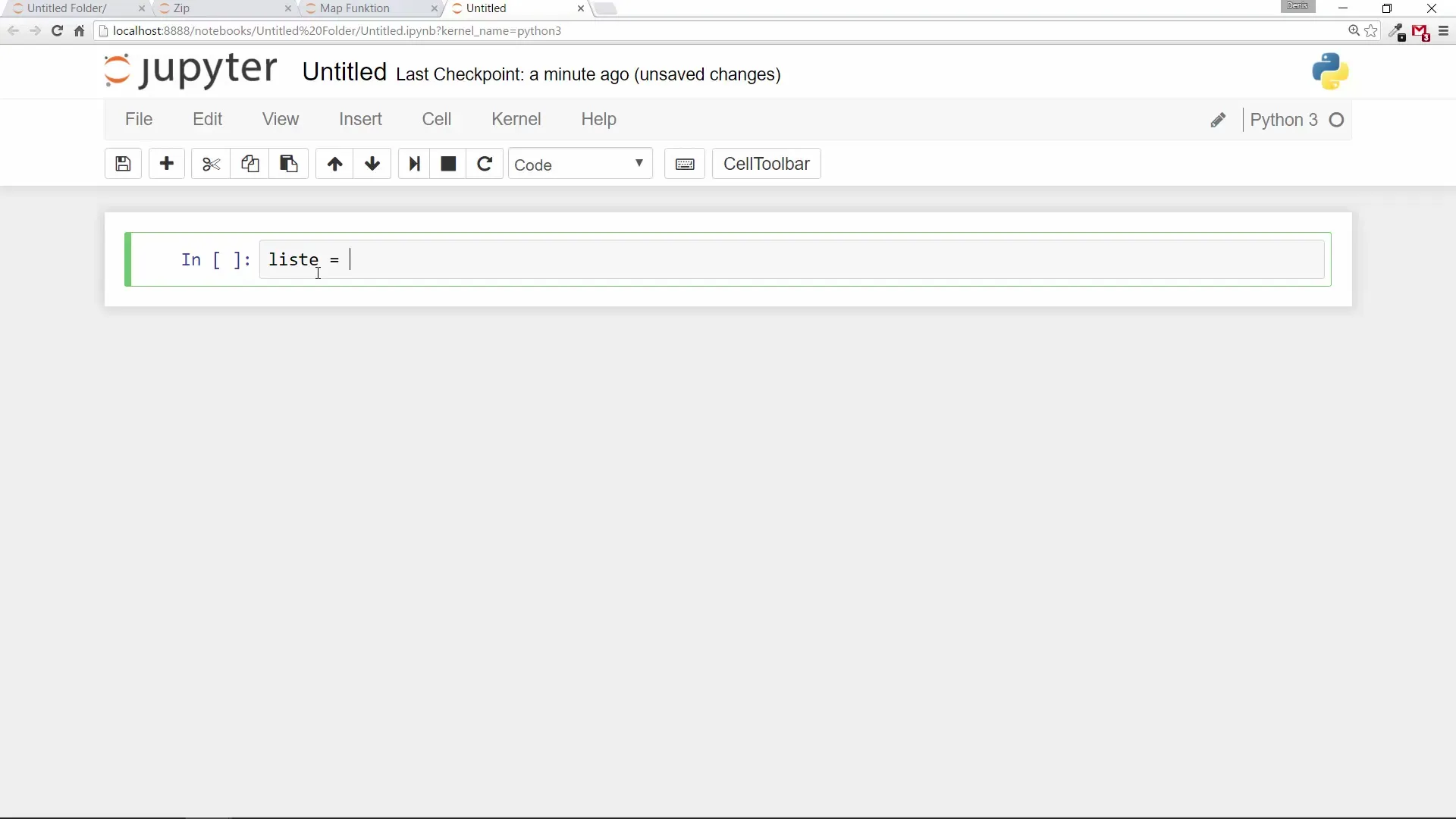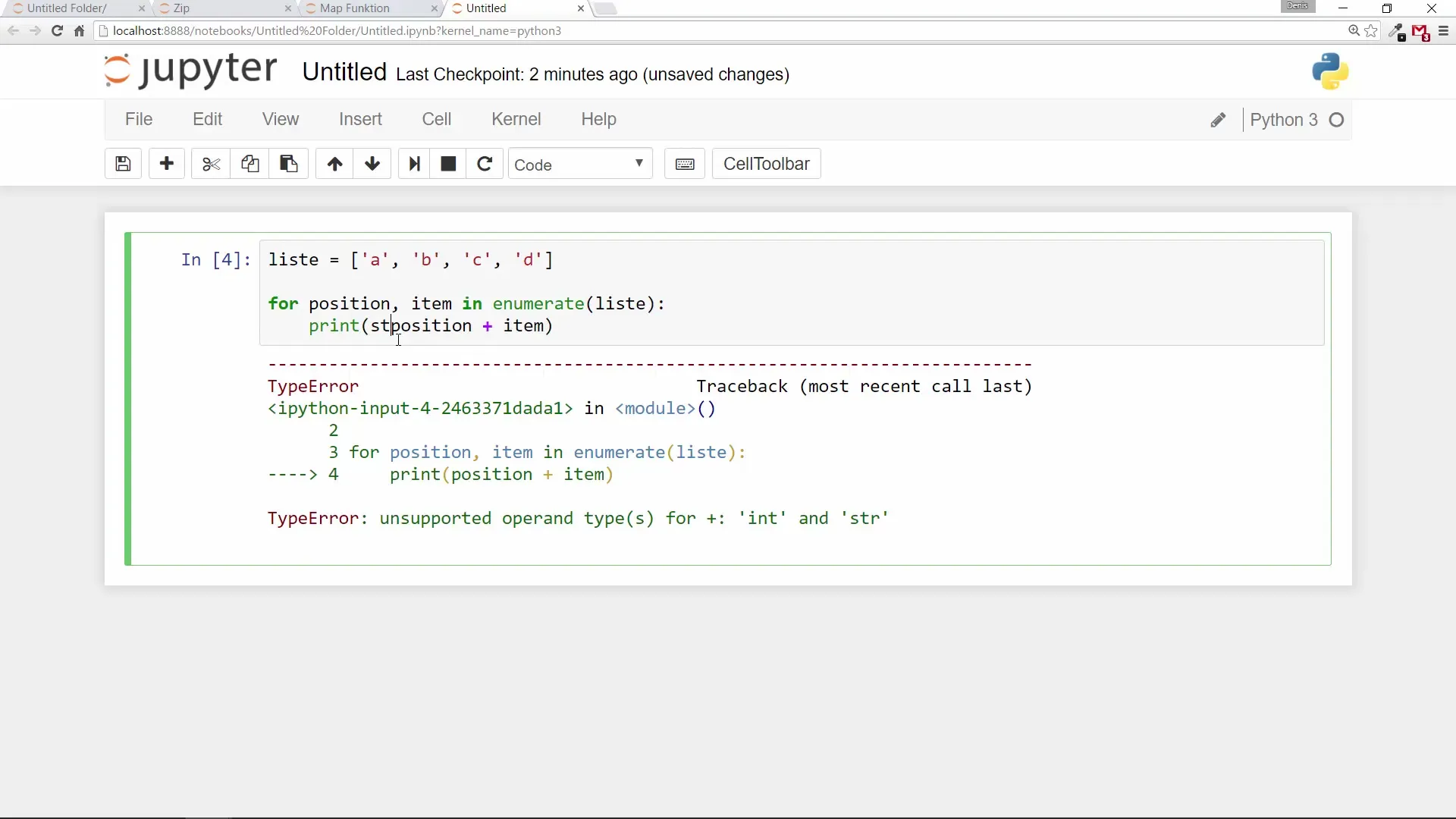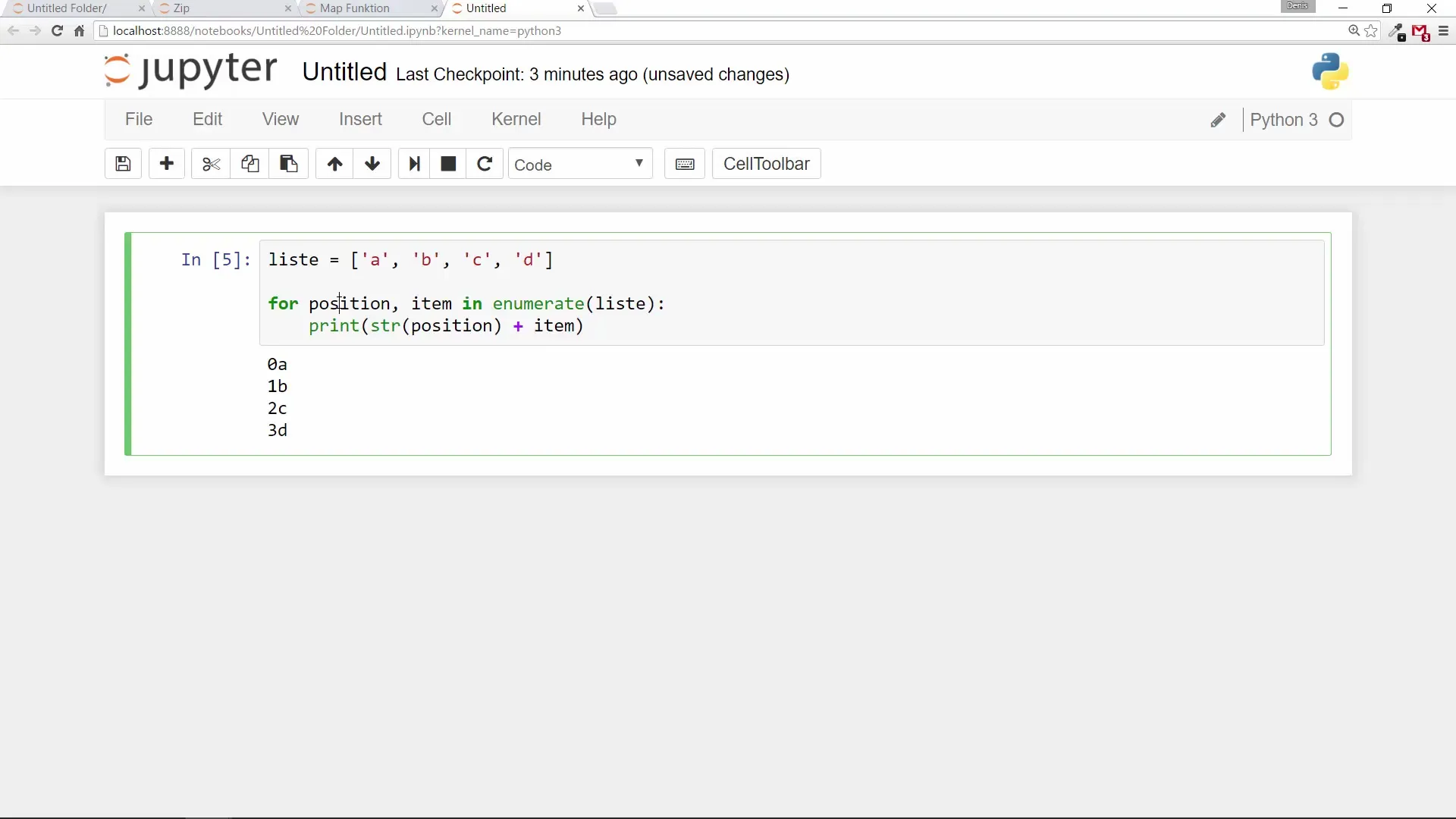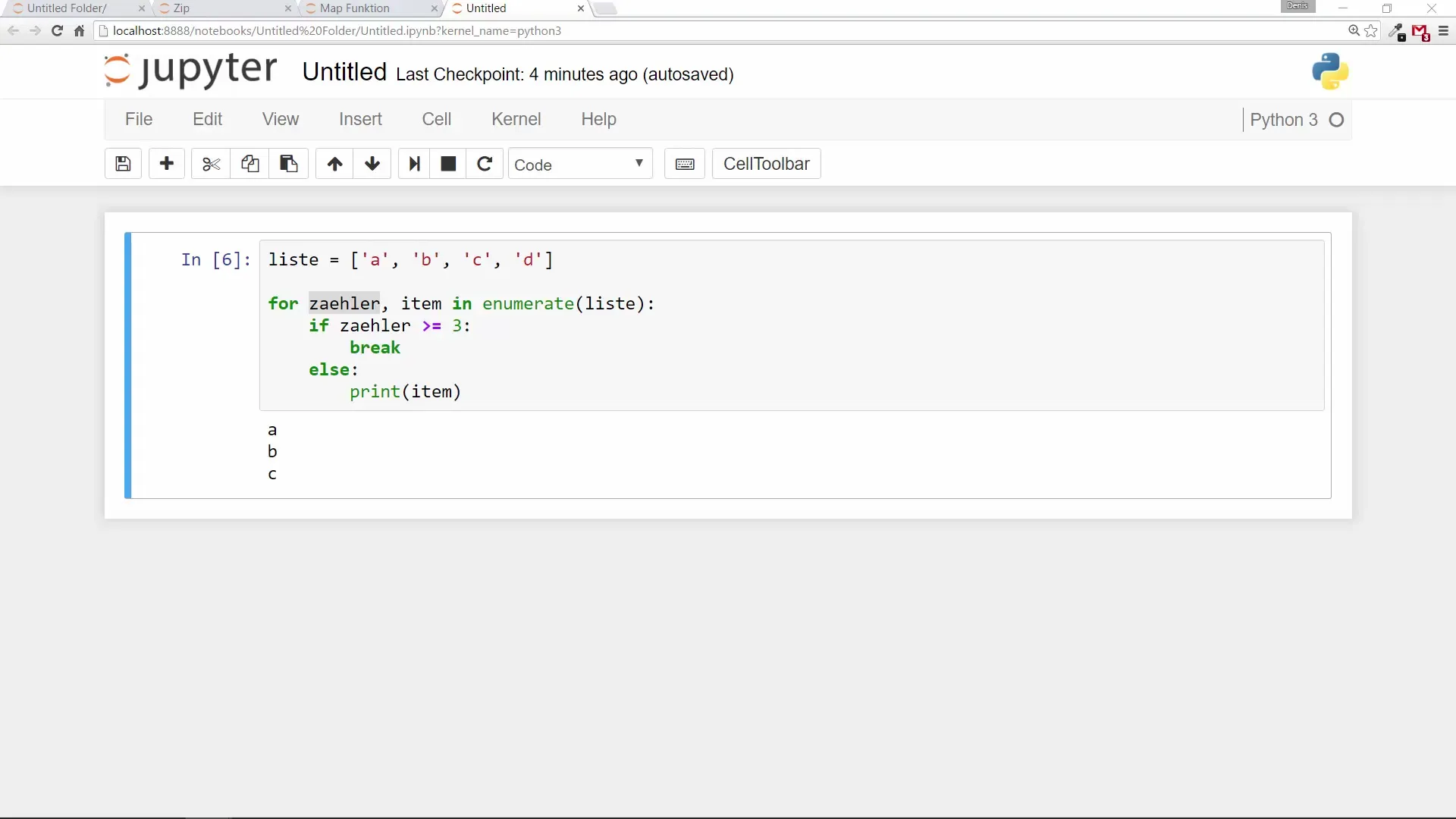The enumerate function in Python is a practical tool that helps you handle lists and other iterable objects more efficiently. Often, you need not only the elements of a list but also their positions. This is where the enumerate function comes into play. It ensures that you get both the index and the respective element in a single pass. Let's dive deeper into the matter together and find out how you can use this function.
Key insights
- The enumerate function returns both the index and the element.
- It simplifies handling lists and their indices.
- The function can be used in loops and other control structures.
Step-by-Step Guide
Step 1: Set up your list
Start by creating a list that you want to iterate over later. In our example, we create a simple list with the letters A to D.

Step 2: Use the enumerate function
Now we want to apply the enumerate function to our list. Here, we iterate through the list to get both the position (the index) and the value of the element. This is implemented as follows:

Step 3: Iterate and output the values
We use a loop to iterate through the list. In each iteration, the enumerate function returns not only the position but also the corresponding element. Therefore, you will output the position and the element in the loop.
Step 4: Convert indices to strings
If you want the indices in a specific format, for example as strings, you can convert them accordingly. This might be necessary if you want to use them for certain outputs.

Step 5: Example output and troubleshooting
If you try to output an index without converting it to a string, you may encounter an error. Depending on the context, it turns out that you cannot directly use indices as strings. This way, you learn to avoid unexpected errors and understand why conversion is necessary.

Step 6: Advanced use of the enumerate function
You can also introduce a counter to control how far you want to iterate through the elements of the list. Let's say you only want to iterate up to the third element of the list. Here’s a possible implementation:

Step 7: Conclusion and insight
After using the enumerate function and its advantages, you see how it can greatly simplify your life when programming. You can easily retrieve both the content and the index in a loop.

Summary – Python Programming for Beginners: Using the Enumerate Function
In this guide, you learned about the enumerate function and how easy it is to read both indices and values from a list. With this function, you will be able to make your programming projects significantly more efficient.
Frequently Asked Questions
What is the enumerate function?The enumerate function returns both the index and the value of an element in a list.
How do I apply the enumerate function?You use the function within a loop to iterate through the list elements.
Can I convert indices to strings?Yes, you can convert indices to strings using the str() function.
Where is the biggest advantage of the enumerate function?The biggest advantage is the simple return of indices and values while iterating through a list.


